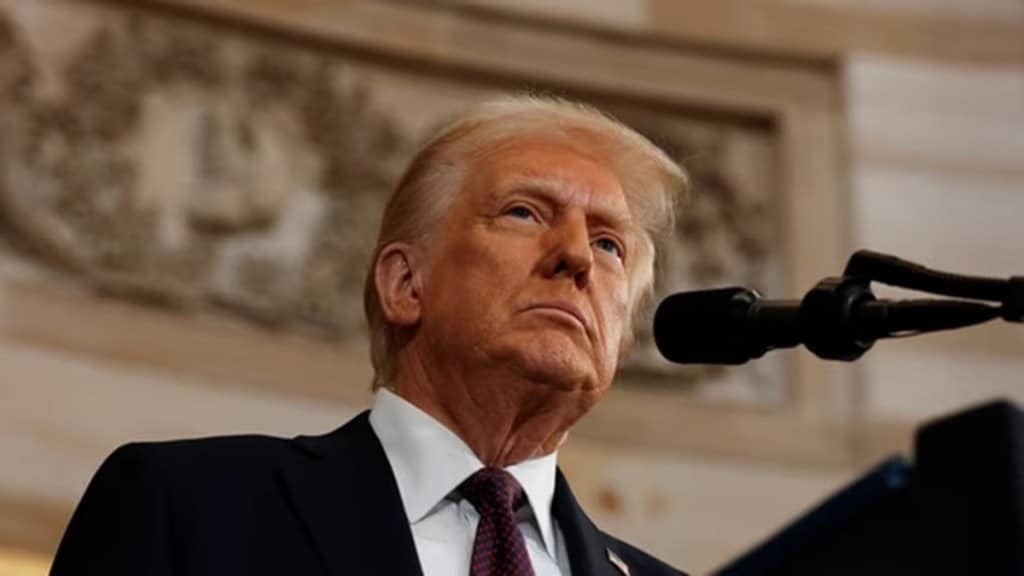By Nirvikar Singh
The Trump tariff saga continues to follow a winding path with unexpected twists and turns. Dealing with the situation is a bit like playing a video game, where hazards and monsters keep appearing and difficult decisions must be made at many stages without a clear sense of what lies ahead. In this case, the “final boss” does not just come at the end, but appears repeatedly. Luckily, in the current reality, just like in video games, there are second chances, and the lessons of past failures matter.
Donald Trump started out with some biases against India. He viewed it as a very closed market for US products, which it has been, relative to many other countries. Matters were made worse by his inherent biases against people who do not look like him, or have the kinds of looks that he finds attractive. Trump also is sensitive to power, and India lacks the kind of power that he pays attention to. He is susceptible to flattery, and—at least as far as I can tell—India’s leaders have not done as much in that direction as many others (even the secretary-general of the North Atlantic Treaty Organization).
Trump’s motivations and India’s response
Some Indian commentators have described Trump as crazy, but he is not that at all. He is very rational in terms of pursuing his own self-interest. He wants to be viewed as powerful and accomplished, and he does not care too much about anyone else in the world (except perhaps some of his family members). He does lack the ethical boundaries that most people have, though he is not unique in that respect by any means. He does interpret reality in a manner that is heavily influenced by his personal needs, but that is also not uncommon.
What has happened in the case of India was driven by all these factors and by the evolving geopolitical situation. Trump is desperate for some kind of peace in the Russia-Ukraine war. He is unable to stand up to Vladimir Putin because the latter holds all the cards and knows how to play the former. India became a pawn in trying to pressure Putin to negotiate, but that went nowhere. The summit between Trump and Putin ended with Trump meekly withdrawing demands for a ceasefire and touting “security guarantees”, which are connected to Russia keeping and acquiring territory. This will likely not be worth anything down the road.
Meanwhile, India’s leaders and its people have reacted with ruffled feathers and sometimes outrage. India has jumped to Russia and China as partners and allies, old and new. This is not necessarily a bad thing. Prominent Indian-American commentator Fareed Zakaria has bemoaned the loss of trust between India and the US, which he sees as having evolved over the last 25 years, and has now suddenly evaporated. In a world of realpolitik, this seems like a naïve view. Trust matters, but Trump is somewhat special among world leaders in being untrustworthy. Just as “friendshoring” was a nice name for pursuing US strategic interests, Trumpism—the pursuit of whatever makes Trump look good—will ultimately devolve to US strategic interests.
India’s long-term strategy
It is true that many of Trump’s advisers are toeing his line, and one or two of them are wedded to the economic illiteracy behind his tariff policy, which is hurting every country it affects—the US most of all. But things will change, unless US democracy is effectively dismantled in the next few years. That is, unfortunately, a real possibility at the moment, with Trump mounting attacks on many fronts to erode voting rights and distort representativeness.
What can India do? “Play it cool” has to be its watchword. There is no need to rise to any bait from Trump or his minions. Diversifying partners and allies is important, but that has always been the case—every country looks after its own strategic interests above all. Much of the US military establishment has the same strategic outlook—that it has evolved over recent decades. The Indian-American presence in the US business landscape remains strong, even though its recent influence has been muted. Putin may get Trump to roll back the extra 25% tariff on India, but that does not mean he is India’s friend. Closer ties with China cannot hurt, especially if border tensions can be reduced. But that does not mean China will not pursue its strategic interests, and India has to remain wary. Europe offers a large number of potential partnerships for India’s strategic economic and military needs. Sometimes, there are costs of commitment, as the lock-in to Russia as a military supplier demonstrates. But some risks have to be taken.
One interesting angle to the Trump pivot against India is worth noting. Trump’s cosying up with the Pakistani military is reminiscent of the 1960s and the US preference for Pakistan’s generals over India’s proud and prickly leaders. But compared to then, India is much stronger, and has much more to offer the world. India continues to accumulate economic strength that puts it far ahead of Pakistan. If anything, following China’s example in the dimension of building human capital and knowledge capital is India’s best defence against pettiness and narcissism.
The writer is professor of economics, University of California, Santa Cruz.
Disclaimer: Views expressed are personal and do not reflect the official position or policy of FinancialExpress.com. Reproducing this content without permission is prohibited.


